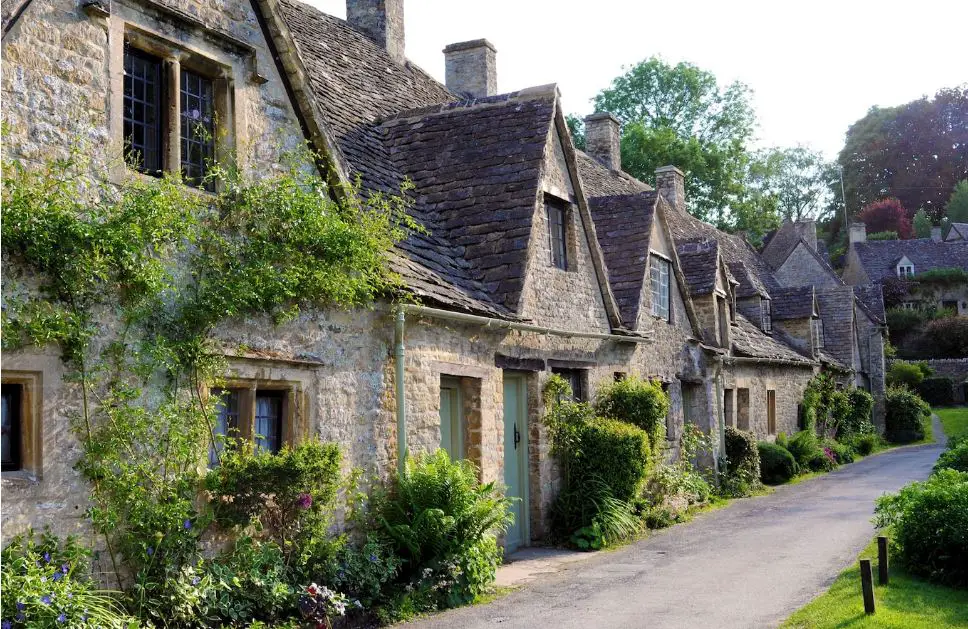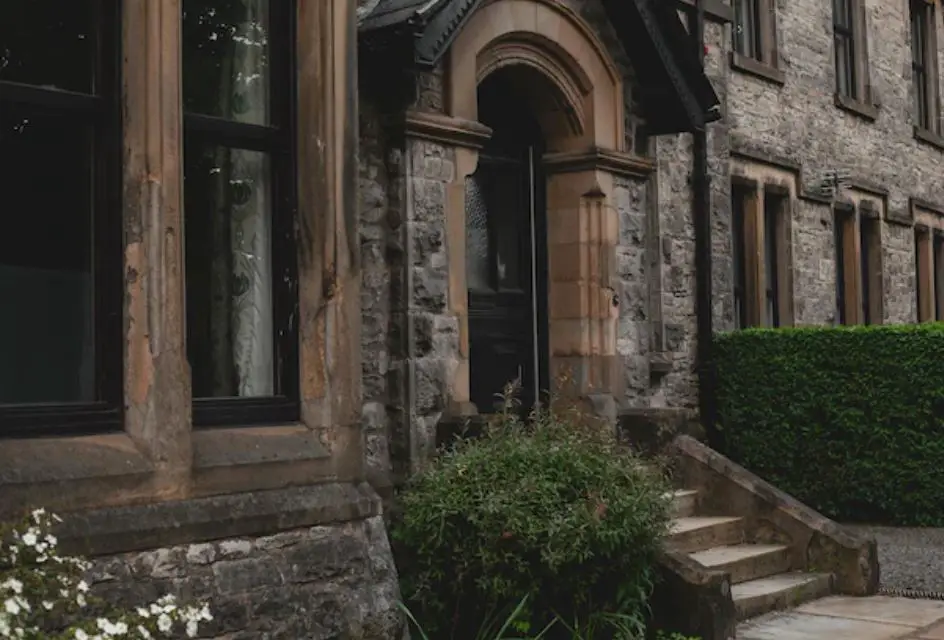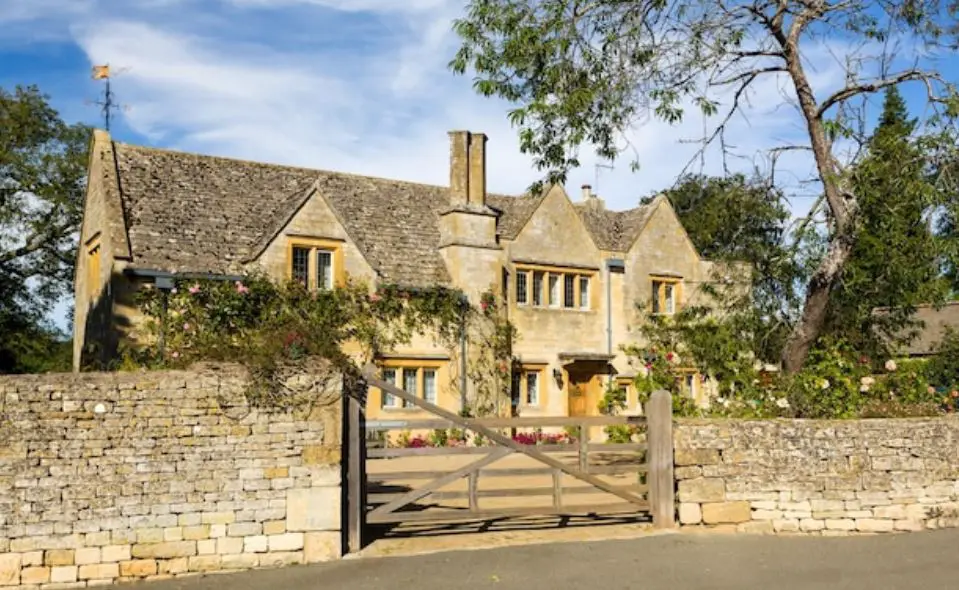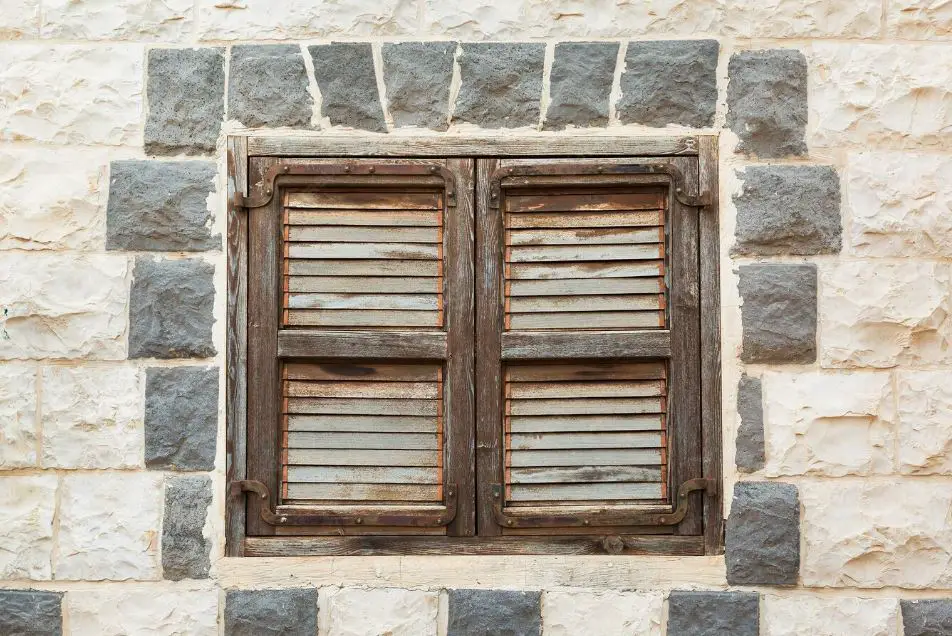Disadvantages & Problems of Stone Houses

Depending on where you live, stone-built houses may only now be gaining a lot of popularity in terms of property developments.
In other areas of the world, building homes from natural or manufactured stone has been common practice for centuries.
Which is best for you? If you’re planning to build your home from the ground up, you might wonder if there are any disadvantages to using stone. This article will take a comprehensive look at the problems you should be aware of if you’re considering stone as your primary building material.
Stone Houses & Their Place in the Modern World
When you think of stone buildings, some of the oldest structures in the world come to mind.
The Pyramids, the Colosseum, the Parthenon and ancient castles and temples all over Europe are only a few to mention.
Since stone is remarkably durable, it makes sense that many of these structures have been standing for centuries.
With that in mind, do stone houses have a place in the modern world? The answer is a resounding ‘yes’! Stone remains one of the sturdiest options. In addition, aside from their strength, both natural and manufactured stone products are viable for sustainable living.
This is mainly because it can be recycled and releases no embedded carbon.But what are the disadvantages?
Are there potential problems related to the maintenance of stone structures?
The Disadvantages of Stone Houses

As with any material, stone has its drawbacks.
For starters, the material is expensive, and it requires collaborating with specialists to source and utilize the stone. There are also additional construction and transportation costs to consider.
Factors such as humidity can also have a negative impact. Let’s take a more comprehensive look at some of these factors, helping you make informed decisions about going ahead with your project.
It can be Expensive
Both manufactured and natural stone types can be expensive. The main reason for this is that working with stone requires specialized building and even plastering skills.
Natural stone may also need to be treated before the building can begin.A bigger home will also require a lot of stone material, which will increase the cost significantly compared to some other options.
The Need to Collaborate With a Specialist
Building a home out of stone requires collaborating with an expert contractor. The material will need to be prepared with various treatments and then skillfully layered and built with mortar.
Adding insulation, damp proof and any other required material also requires expert skill to ensure quality workmanship and safety.
It Results in Heavy and Thick Walls
It’s no secret that stones create very heavy walls. The size and types of stones used can also create thick walls which reduce floor spacing. Not factoring this into your initial design might leave you with smaller rooms than you had planned.
High Construction Costs
Stone houses require specialized construction. This includes insulation, damp proof and any additional materials needed to construct your new home. Construction costs can also vary, depending on the area where you’ll be living.
Transportation Costs

Opting for manufactured stone means you will most likely be able to get the stone you need from a local building supplier.
However, if you’re going to use natural stone, it’s very unlikely that you will find the quantity needed from your local dealer. This means you’ll have to factor in transportation costs. Added to the other building costs, your project can get quite extensive.
Humidity
It’s important to check the humidity levels in the area you’re planning to build your home. In areas subject to high humidity, the environment can cause dampness to rise in the walls.
Excessive moisture can cause the growth of bacteria or mold. In fact, Comfy Living states that around 70% of homes currently have some type of mold. Additionally, humidity can also lead to the degradation of certain types of stone.
A Slow Process that Takes Longer
Wooden houses can easily be assembled and put up in a few weeks. On the other hand, using stone materials is a much slower process. Primarily, this is because:
- Stone is heavy, so it often requires special handling.
- Building with stone takes considerably longer than putting up wooden beams as it involves applying mortar. You’ll need to wait for it to dry properly before moving to the next step.
Much More Difficult to Repair And Modify
Have you ever heard the expression, “set in stone?” There’s a good reason for it. Implementing changes to your initial stone design can be difficult, if not impossible. Damages will also be considerably difficult to patch up.
It Requires an Annual Inspection
Annual stone inspections may also be necessary in some locations. Maintenance can include:
- Exterior walls
- Foundations
- Checking the walls for rising dampness and mold growth, especially in areas that experience excessive rain.
Common Problems of Stone Houses

If you can handle facing the drawbacks, do educate yourself on the potential problems your stone house may bring about in the long term.
Knowing what these problems are will make it easier to prevent them or handle them better while building or living in your stone house.
Mortar Deterioration
Over time, cracks might start developing in the mortar between your stones.
For the most part, these cracks are caused by foundation settling or even upward heaving, which is the swelling of clay soils when there’s an increase in moisture. When these types of cracks worsen, it often becomes necessary to consult with an expert.
Cracking & Spalling Stones
Another problem that you might encounter with stone walls has to do with cracked or spalling stones. This is often caused by one or a few of the following factors:
- Foundation settling: When your foundation starts settling it puts downward pressure on the stones. This added pressure can cause the stones to crack.
- Excessive moisture: Rain, humidity and any other type of moisture can enter the stones and freeze in the winter. This can happen when your home doesn’t have strong gutters, causing water to cascade down onto the stones.
- Mortar being harder than stones: When repointing (replacing the old mortar) is done with mortar that’s harder than the stones, moisture puts pressure on the adjacent mortar. In turn, the stones will crack and spall.
Possible Structural Issues
Several structural issues can occur in your stone walls as the foundations start settling.
Additionally, a leaking roof with water pouring over the structure can cause the stones to erode.
When this happens, you’ll have to hire a skilled contractor to identify and rectify the cause of the structural issue.
When that’s done, the next step will be to fix the collapsing stone wall by stabilizing or rebuilding it. This will not only be inconvenient, but very costly too.
Stones Gathering Dirt or Mold
Stone houses easily gather dirt and can easily develop moss or mold on their exteriors. Airborne pollutants and dirt can also accumulate in areas exposed to the weather.
A professional will have to expertly clean the stones since washing them incorrectly or with harsh chemicals will result in erosion.
The stones will then need to be treated with products designed to kill and prevent mold, mildew and moss. Once again, this can be a costly exercise that you might not have factored into your budget.
Dampness
Stone walls can easily become damp, usually because of the following:
- Rising damp: Groundwater rises up from the ground into the stone structure and starts eroding the stones. The damp build-up in the walls can lead to mold.
- Unrepaired leaks: Blocked gutters can cause water to leak against the stones. If left for a long period, the water starts seeping into the stones.
- Weak mortar joints: Excessive rain or humidity leaking through any possible weak mortar joints will increase the dampness in between the stones.
To rectify the problem, you’ll have to deal with the cause of the damp problem first. That might involve repairing or replacing gutters or dealing with the foundations.
Once that’s done, the stones will have to be specially cleaned and repointed. Worst case scenario, your mason expert might have to replace the damaged wall or foundation.
Let’s take a look at the most common questions asked by people interested in building stone houses.
FAQ

How to damp-proof stone houses?
Stone is susceptible to “rising damp”, depending on the size of the pores and wall thickness. In some instances, it’s recommended to use a damp-proof course (DPC) which involves injecting a cream or liquid into the walls. This acts as a water repellant to stop dampness.
Additionally, to lower the risk of dampness in the walls, consider the following tips:
- Perform routine checks to ensure there are no water leaks from the roof
- Include trickle vents – small ventilating components structured within the top of the wall, door or window framework
- Install a positive pressure ventilation system in areas with extreme humidity
- Where possible, leave windows open often, to dry out condensation caused by humidity
What is the best sealant for stone houses?
Applying a quality waterproofing sealant to your stone structures not only extends the life of the mortar but also reduces chipping and cracks. The best option to consider is a silane/siloxane product because it allows the stone to breathe and also won’t change the stone’s color.
How long do stone houses last?
One of the top reasons many people choose stone as a building material is its longevity. Opting to use natural stone in the right circumstances will mean your building can last 100 years, if not longer.
Since natural stone is rather expensive, you may be considering manufactured stone, and it’s still a good investment. Fortunately, many types of manufactured stone have an average lifespan of 50+ years. It’s common for builders to use a combination of both.
How to repair a stone house
Whether you want to refurbish or repair a natural stone home, the process involves:
- Step 1—Grinding: Remove uneven imperfections on the exterior and grind the surface flat. Blow out debris and dust from any cracks.
- Step 2—Rehoning: Mix a fine abrasive powder with water and apply it to the damaged area.
- Step 3—Polishing: Use a polishing tool to polish the stone–this process returns the stone’s original color and shine.
How to insulate a stone house
There’s a common misconception that thick walls are naturally insulated from heat loss. Rather, the reverse is true. Stone can be quite cold. That means the best way to keep your stone house warm in winter is to opt for adequate insulation. In this instance, you should opt for breathable insulation such as calcium silicate-based insulation boards and aerogel-based blankets.
What climate do stone houses suit?
Stone is essentially very cold and takes a bit of time to retain heat. You’ll benefit in an environment where days are warm and the evenings cooler. This will prevent your home from feeling like an oven during the day.
Are stone houses expensive to build?
Stone homes are among the more expensive construction options. Expenses include higher labor costs, design, connections, insulation as well as site and building costs. Depending on where you’re planning to build, transportation costs for the stone materials will also need to be factored in.
Conclusion

Opting for stone will provide you with a stable and durable home.
However, before you use stone as your primary material consider the disadvantages and the potential problems you could face in the long run.
Knowing what you’re up against will enable you to make structural and financial provisions. That way you’ll still be able to enjoy your dream home for years to come, without too many maintenance or budget concerns.
With our comprehensive list of disadvantages, it’ll be a lot easier for you to make an objective decision when considering a building material for your home.
Arm yourself with all the data to make the right decision.


